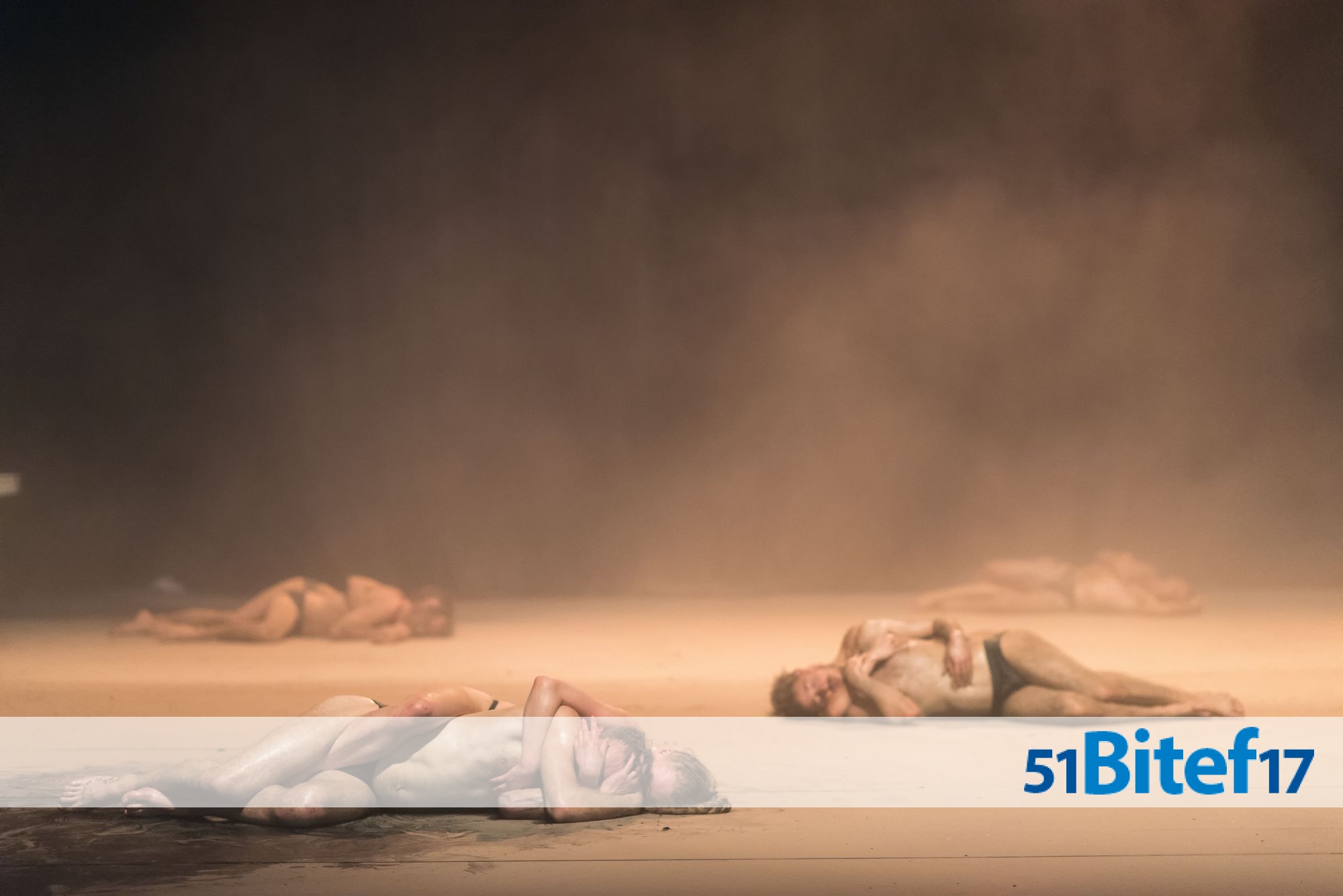The subject of the panel is a phenomenon that decisively or significantly determines the performances Quizoola! by Forced Entertainment company, Mount Olympus by Jan Fabre, and even The Bible, the first attempt by Jernej Lorenci: these are all long performances (lasting three and a half, six, and even 24 hours). Such performances are often called ‘durational’. In such performances, due to their long duration perceived physiologically, the experience of time stands out as central: it is no longer an external circumstance of the performance but its principal subject. Analysing the phenomenon of time in postdramatic theatre, Hans Thiess Lehmann expands on this and argues that not only very slow and long performances, but any performance whose duration is ‘sensitised’ (therefore even very short performances, such as Soldier, a 15-minute performance by the Russian director Dimitry Volkostrelov - I.M.) makes us aware of the time and raises it to the level of the subject from that of a mere performing given. When talking about slow and long duration, one needs to bear in mind that the ‘aesthetic of slowing down’ appears in other arts as well - film, for instance - but it is particularly manifest in the performing arts due to their "experientiality".
Analysing the phenomenon of ‘great’ or ‘large-scale’ in theatre, including that of long duration, the French theorist Frédéric Maurin has offered a provocative hypothesis arguing that this phenomenon always makes us ‘leave the theatre’, both figuratively and literally. Long duration implies a ‘crisis in representation’, turning even a firmly structured spectacle into art of performance. If we move from the theoretical to the artistic domain, this hypothesis finds much support in the work of Tim Etchells, one of the founders of Forced Entertainment, a British company whose durational performances have gained a worldwide reputation. Long duration applies psycho-physical pressure on the performers, they get tired, their concentration weakens and over time, they become vulnerable; the audience see them not as characters any longer but as real people - just like in performance art. Mere duration erases the difference between art and life - something that begins as a structured work of art ends in a completely different way, Etchells concludes. We might add to this that duration produces the same effect in the audience, since in them, too, as the performance goes on, the boundary between art and life disappears (they start nodding off or deconstructing theatrical conventions in some other way).
Critically addressing the phenomenon of long performances, Maurin points to their paradoxes, including the aspiration to infinity (it can only be implicit). The paradox of infinity is that by definition it totally resists mimesis: it cannot be represented. In this regard, Maurin argues that Bob Wilson, whose early works famously experimented with time, ‘periodically dreams’ about an infinite performance, which the audience would naturally watch intermittently, sporadically… It is exactly due to these inevitable breaks and sporadic nature that the aspiration to an infinite performance, Maurin asserts, becomes even more paradoxical, as in some very long performances of Marina Abramović and Tehching Hsieh, when the surplus becomes a deficiency, a void.
Apart from purely aesthetic, durational performances also have social and even political aspects. As I already pointed out, long duration affects the spectators themselves. We are asked to yield to the rhythm and energy waves of such a performance and, together with the rest of the audience and the performers, shed the shackles that civilisation has imposed on us for centuries. As such, a long-lasting performance becomes an experienced, civilisational, political alternative to our everyday hastiness, superficiality, rashness… This viewpoint is shared by all theorists who have recently addressed the phenomenon of durational performances. It also agrees with Lehmann’s hypothesis about performing forms themselves and ways of communication between spectators and performers as a specific manifestation of politicality in postdramatic theatre. As Georges Banu points out, rather than adjust to an age of speed, the theatre increasingly assumes a polemical and critical attitude, rediscovers and celebrates slowness, a characteristic feature of times long past.
Here Maurin sees another indication of the contradictory and paradoxical nature of long performances. He basically asserts that durational performances constitute a (political) subversion of modern civilisation, based on universal dispersion, acceleration, profitability, the possibility to turn anything into an object of consumption. On the other hand, Maurin warns that excess is precisely the ‘quality’ with which modern society of ‘affluence and unbridled multiplication’ turns art into commodity.
These insights allow us to deduce some general and initial questions/dilemmas related to the phenomenon of durational performances:
- do the ‘excesses of duration’ truly and inevitably result in our beginning to perceive time as a subject/problem in theatre; are there durational performances where this is not the case?
- does long duration inevitably loosen the structure of the play and blur the boundary between life and theatre, turning the spectacle, even if not conceived as such, into a performance (enhancing its experiential aspects)?
- are durational performances truly a political/civilisational alternative to the world of haste, superficiality, profitability, and consumerism, or is their grandiosity precisely the way in which the modern culture of affluence commodifies art?
Ivan Medenica
Sources:
Banu, Georges, "L'interface du grand format", Le Grand format: Les Alternatives Théâtrales 119, 2013.
Etchells, Tim, "When theatre is the time of your life", The Guardian, 27. 02. 2009.
Lehmann, Hans-Thies, Postdramsko kazalište, CDU/TkH, Zagreb/Beograd, 2004.
Maurin, Frédéric, "Le grand et ses paradoxes", Le Grand format: Les Alternatives Théâtrales 119, 2013.
The panellists will comprise theatre scholars and artists of different generations who have studied the phenomenon of ‘durational performance’ either in their artistic practice or theoretical research, as well as artists who have articulated it in their performances, such as Bob Wilson, Marina Abramović, Peter Brook, Krystian Lupa, Forced Entertainment company, and many others:
Prof. Maria Shevtsova (Goldsmiths, University of London; editor of New Theatre Quarterly), Prof. Georges Banu (Sorbonne Nouvelle - Paris 3, editor of Alternatives théâtrales, honorary president of the International Theatre Critics Association), Cathy Naden (actress, co-founder of Forced Entertainment, Sheffield), Prof. Goran Sergej Pristaš (Academy of Dramatic Arts, Zagreb, co-founder of BADco collective, founder and first editor of Frakcija magazine), and Bojana Janković (visiting lecturer, The Royal Central School of Speech and Drama, London, theatre director and critic).
Moderator: Prof. Ivan Medenica, Faculty of Dramatic Arts in Belgrade, artistic director of Bitef


- total votes 0